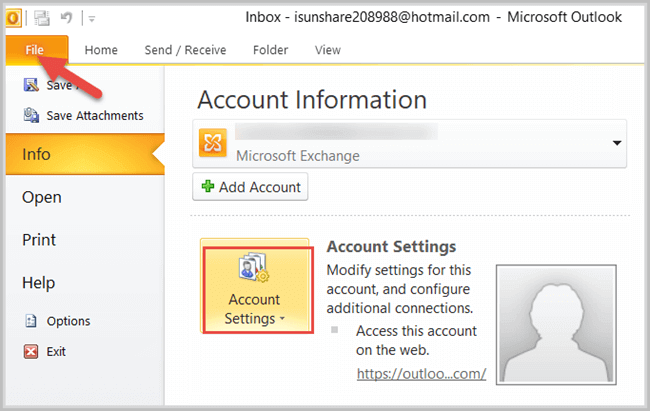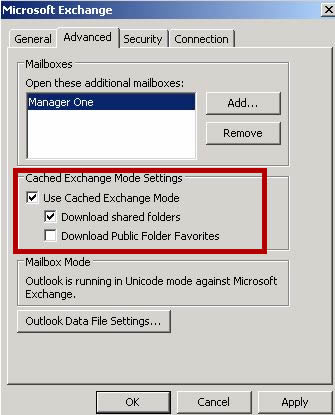


This is usually a result of Cached Exchange Mode being on for shared mailboxes. You can test this easily by creating a second mail profile
What is cached exchange mode outlook 2013 Offline#
Here are a few examples of issues that it can cause: Some files will be stored locally and not propagate to the exchange server as they should As per Outlook client, you may try to disable Cached mode using GPO: User Configuration > Administrative Templates > Microsoft Outlook 2016 > Account Settings > Exchange > Cached Exchange Mode > Use Cached Exchange Mode for new and Existing Outlook Profiles Disabling Outlook cached mode will not delete the.ost files, associated pst files or the offline address book. However, by default, when Outlook 2016 is installed and Cached Exchange Mode is enabled, a new compressed version of the Outlook data file (.ost) is created Coming from a Microsoft Active Directory (read as Microsoft Domain) environment I have seen cached exchange mode cause more issues then it solves and I generally recommend users turn it off. When upgrading, if you do not change Cached Exchange Mode settings, the same settings are kept for Outlook 2016. You should be back at the Email Accounts window Turning off Cached Exchange Mode for Office 365 shared In the Exchange Server Settings window, check Use Cached Exchange Mode and click on Next. In the E-mail tab, select your Exchange account and click on Change. In Outlook, go to the File > Account Settings, then click on Account Settings again in the dropdown. While the Cached mode is enabled in Outlook, the Outlook client will check. The cached mode has a job of keeping a local copy of the user's exchange mailbox stored on the hard drive in the form of an OST file. Cached Exchange Mode is one of the two modes to connect the Outlook application with an Exchange account. If you disable cached mode, you can only use. when the connection to your server is restored any changes to your local copy of your mail will be upload to the server. Cached Mode syncs the server and client so in the event of disruption in your connection to the server you can still work in your mail, albeit in Off-Line Mode. By default, 12 months of your email is available offline, but you can control how much mail is kept offline Essentially yes. Emailgistics strongly recommends that customers do this, by following these instructions: Step 1 If you want to turn off Cached Exchange Mode, repeat the steps, but clear Use Cached Exchange Mode. Microsoft has provided the facility within Outlook to turn off cached exchange mode only for shared folders. Turning off cached mode removes the potential for sync issues but we don't want to turn off cached mode for all folders. If you have any issues changing settings in Outlook, please contact the OIT Support Center.Home What happens if I turn off Cached Exchange Mode The final window will confirm that the change was completed successfully.You will see a pop-up window reminding you that the changes won't take effect until you restart outlook.Under the Offline Settings header in the Change Account window, uncheck the box next to Use Cached Exchange Mode and then click Next.From the Account Settings double click on your email address.

Select the Account Settings drop down menu and then click on the Account Settings options.Open Outlook, and from the tabs at the top click on File.Turning Off Cached Exchange Mode in Outlook These instructions are for Outlook 2016, but are also applicable to Outlook 2019. If you are experiencing any of these issues, follow the instructions below to turn off Cached Exchange Mode. The program will be slower to process changes in the Global Address List, or will be unable to find certain emails when you search for them. This cache can sometimes hinder the performance of Outlook. When you set up your mail profile in Outlook 2016 -2019, some of your messages and the address book are cached (stored locally on your computer) by default so that Outlook can retrieve the information quicker.


 0 kommentar(er)
0 kommentar(er)
